Review for Milano Calibro 9
Although my knowledge (and love) of Italian schlock cinema has grown through the relentless release programme in the UK of giallo films from the sixties and seventies (via Shameless and Arrow) I’m less familiar with the straight-up tough guy movies from the same period. Like Japanese Yakuza movies, the Italian version of the tough-guy genre apparently has as distinctive a style as the so-called spaghetti Westerns did compared to US Westerns. Based on a single viewing of ‘Milano Calibro 9’ I can well believe it.
The film may well be more familiar to folk in the US as the shorter titled ‘Caliber 9’ (the Milano of its original title just a reference to the fact that its many exterior shots were filmed for the most part on location in Milan). Directed by Fernando di Leo, acknowledged as the master of the genre, it clearly picks up much of its style from the grittier police films coming out of the US at about the same time – stuff like ‘Serpico’, ‘Bullitt’ and ‘Dirty Harry’. In common with many of those films it features a single individual taking on the rest of the world – in this case, an organised crime syndicate and the police.
Throughout the very early 70’s, di Leo produced a series of ‘Italian Noir’ films, staring with ‘The Boys Who Kill / Naked Violence’ and ‘The Beast Kills on Cold Blood’ (aka Slaughter Hotel aka Asylum Erotica) followed by ‘Milano Calibro 9’ in 1972. Often seen as the first of a trilogy of such films followed by Manhunt (aka The Italian Connection) in the same year and The Boss (aka Murder Inferno) in 1973.
The story for ‘Milano Calibro 9’ originated from Giorgio Scerbanenco’s writing; a popular hard-boiled noir writer who published so prolifically that he used up to 35 different pen-names alongside his own.
The film opens with a brilliant scene set to quasi-classical music of a highly choreographed ‘switch’ with a bundle of cash changing hands among couriers who eventually get the package to a moustachioed gangster.
When he unwraps the package to find bank-note sized paper he goes crazy. Who switched the real cash for the fake stuff? All the couriers are rounded up, one by one, and beaten within an inch of their lives – including the ladies. They are then unceremoniously bound together with rope and blown up. An explosive and violent start to a brilliant film.
Next up, Ugo Piazza (played superbly by Gastone Moschin, better known at the time for his comedy work) is an ex-con. After he’s released from a quiet three year stretch in jail, he steps outside to a heap of trouble. His cold-steel eyes and quiet manner give little away as he seems to accept his fate. A violent local gang, led by the ruthless ‘Mikado’, believe that he has stolen $300,000 from them and they want it back. He figures that they’ll keep him alive just so long as they think he’ll lead them to the cash so he gently bides his time despite some rough encounters and threats on his life.
Two of the Mikado’s top dogs, Rocco Musco (Mario Adorf) and Pasquale (Mario Novelli) set on putting the pressure on ‘potato head’ (Piazza looks a little bit Phil Mitchell-like) but failing in the attempt to get any information, the Mikado claims he wants Piazza to join his crew. Realising that he has no choice, despite the police being on his trail for the same reason the gang is, so he becomes a member of the gang again.
Soon he also picks up with his old squeeze, the go-go dancing looker Nelly Bordon (Barbara Bouchet ‘Don’t Torture a Duckling’) who seems keen to have him back. He also looks up a tough old friend, Chino (Philippe Leroy) who was an old compatriot in the old-school mafia.
Things get complicated when Piazza is told to attend a ‘hit’ on his old don. He doesn’t realise what’s happening until it’s too late though, fortunately his friend Chino survives to fight another day.
More money is stolen (at a bowling alley this time) in a vicious hit where the courier is counting the money in a toilet cubicle and is brutally shot down. Suspicions fall on Piazzo and things start to get very heavy.
The culmination of the film and plot is about 15 minutes of non-stop blood-shed and a last minute plot twist which will have you sitting on the edge of your seat.
At 90 minutes the film feels short and is incredibly entertaining. In many ways it reminded me of ‘The Equaliser’ which I saw recently. One small man against the world. But it is a far superior film to that.( It’s almost believable for starters).
The film looks great on this Blu-ray release (in OAR 1.85:1 colour) of which highlights some inventive cinematography, showing Milan off to great advantage, as well as some startling editing. It all comes together into a powerful (if violent) film, full of action and with a top notch cast.
You get two choices for audio – an English dub and original Italian with optional subs. I chose the former which kind of worked (in the way it does in Spaghetti westerns where some of the actors deliver in English in any case) though next time I’ll definitely go native with the subs.
The music is worthy of mention – it’s a powerful presence throughout but never more so than in the film’s opening tem minutes. A quasi-classical theme with Luis Bacalov’s score suddenly punctuated with dramatic music from Italian prog-rockers, Osanna.
In common with many Arrow releases, a decent array of contextual extras are also included on the disc.
The 30 minute featurette 'The Making of Milano Calibro 9' is an Italian language piece produced in 2004 presumably for an earlier DVD release of the film. It’s a rough and ready production which benefits from contributions by director di Leo, as well as the editor Amedeo Giomoni , assistant director Franco Lo Cascio, producer Armando Novelli as well as Philippe Leroy, Barbara Bouchet, and Luis Bacalov.
A second featurette, 'Di Leo: The Genesis of the Genre' , runs at almost 40 minutes and has a firm focus on di Leo with clips from his films and from many who worked with him over the years.
'Scerbanenco Noir' is another 2004 featurette which runs for 30 minutes, focusing on the work of writer Giorgio Scerbanenco, whose fiction inspired di Leo’s milieu trilogy. It features a host of talking heads, many well-known Italian novelists in their own right, discussing the brilliance of Italy’s very own Raymond Chandler.
'Italia Violenta' , running in at almost 20 minutes is a newer film, commissioned (I’m guessing) by Arrow for this release. It features a lengthy interview with a very knowledgeable Matthew Holness, the creator of Garth Marenghi, sitting in Arrow’s offices if the rows of DVD’s behind him are anything to go by.
There’s also a brief audio interview over the phone with actor Gaston Moschin, now 86, which is accompanied by a series of stills.
Two trailers ate included (US and Italian) as well as a really excellent booklet containing new writing on the film by Italian film critic and author Roberto Curti.
Another fantastic film delivered with a great transfer and a slew of excellent extras. If it sounds even remotely like your bag then pick it up!
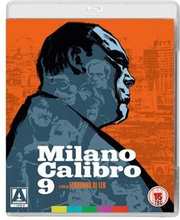
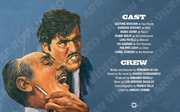
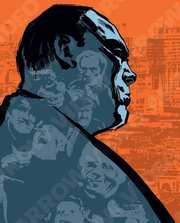
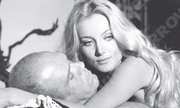

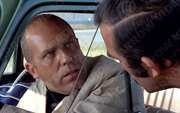





































Your Opinions and Comments
Be the first to post a comment!